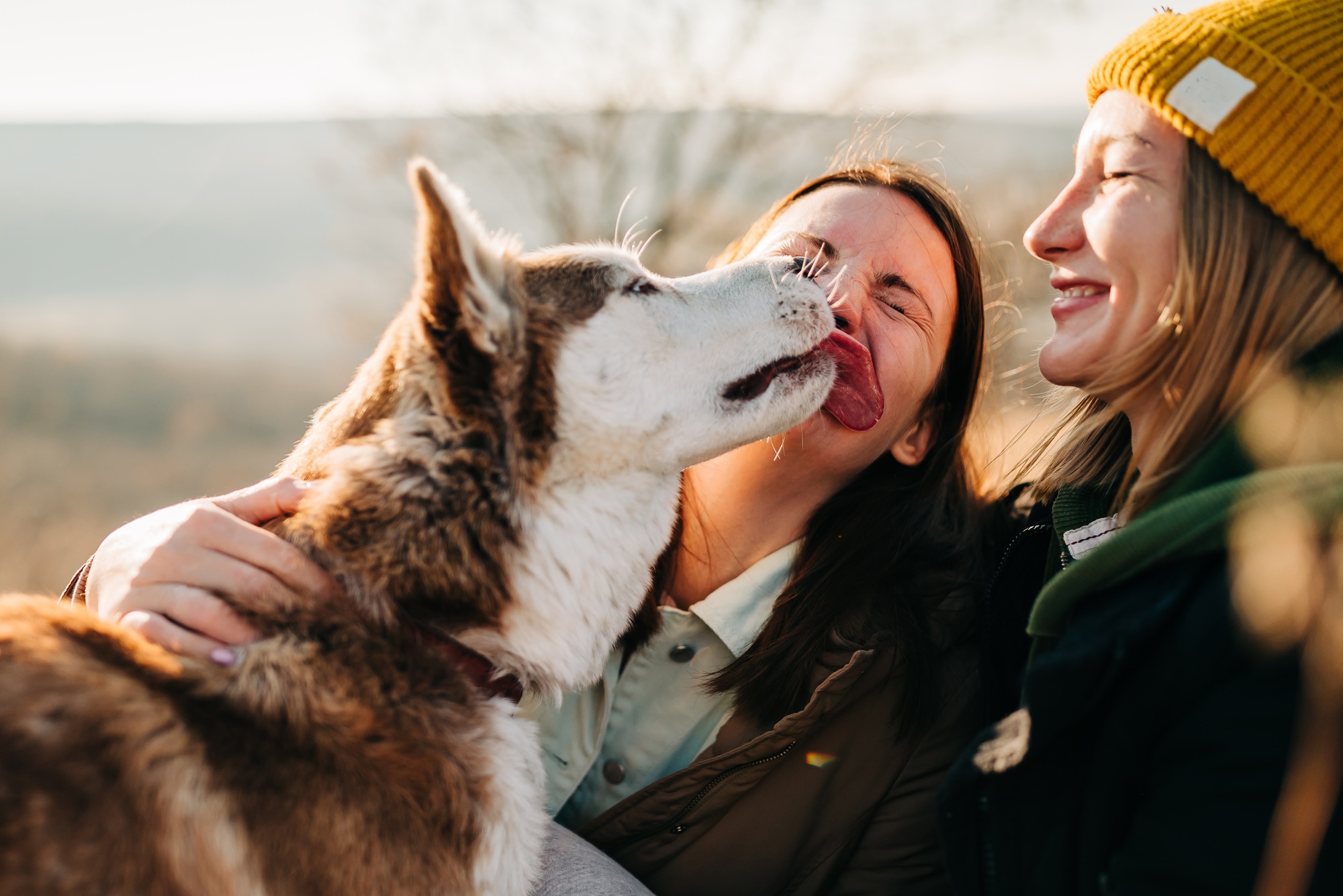Charlie's Story
Meet a dog we’ll call Charlie. I’ll tell you a bit later how he came across my radar, but for now, let’s start with the facts, as reported by shelter personnel, although most of these facts were not included in Charlie’s adoption marketing materials.
Charlie came into the shelter at least 6 months ago. He had never bitten anyone according to the people who relinquished him, nor did he bite anyone during his stay at the shelter His was estimated to be 2 years old and weigh in the neighborhood of 50 pounds, maybe more. The only behavior noted was spinning and barking in his kennel.
Based on these facts, or perhaps unshared impressions, the shelter staff described him in various ways on his kennel card and/or online notes. Again, these descriptions were meant for potential adopters. Charlie was labeled a “shepherd mix,” at a shelter that says it has lots of Shepherds and not enough Shepherd fans among its potential adopters.
They described him as having “loads of energy to burn,” nervous,” “best suited to a low traffic home.” Then there was the shelter’s standard checklist of social compatibilities or in this case incompatibilities. Is he “good with dogs?” Apparently not, being described as “very selective,” a dog who ”would prefer to be your only pet.” Is he “good with cats?” A flat no here. “Good with kids?” Another flat no.
Now let’s take this information apart, look at the data points one by one and see what we think, particularly as they relate to the issue of dangerous dogs within a shelter population.
First, there was no record of a bite history. This should be no surprise—only ½ of 1% of dogs do. Imagine that bite history vs. no bite history within any randomish population of dogs were red and black on a roulette table, practically all of the spokes would be black. You could bet black all day long and rarely place a losing bet. If you put all your facility’s dogs’ names on bits of paper and put them in a hat, you could grab one with a lot of confidence that it wouldn’t come up with “bite history” written on the back.
What did the staff observe him actually doing?
Charlie had been living in the shelter for more than six months
It is for all practical purposes impossible to overestimate the effect of social isolation on the behavior of a domestic dog, any more than you could for a human. The effect of isolation on behavioral health is potentially so harmful that you simply cannot infer anything about a dog’s behavior in a home environment based on its behavior in an isolated environment like a shelter. The natural environment for a dog in the United States is a human home, with daily opportunities to interact in positive ways with human beings. It is the only way he can develop and maintain what ethologists and psychologists call social competence, the ability to interact appropriately with other individuals. This is why the standard of care top two husbandry priorities in any rehoming organization must be foster homes and play groups. Our subject dog, Charlie had little contact with people and none with other dogs for six months. Various personality descriptors were then inferred from how he responded.
Charlie was labeled a “shepherd mix.” Now we have had robust literature for some time demonstrating that visual breed identification is extremely unreliable, so when we give adopters such labels, the very least we are doing is misleading them. And in fact, an enormous new study—so impressive it made the cover of Science–from the Broad Institute (a collaboration between MIT and Harvard on the study of genetics) has not only further solidified this unreliability, it has shown once and for all that most dog behavior simply does not track much by breed at all, especially those behaviors we tend to call “aggressive.”
So what are we doing when we attach such a label to Charlie, who is clearly a mixed breed of some kind? We are setting up adopters for baseless expectations and we don’t even know what those expectations might be. For one person, the name might evoke fond memories of a happy childhood pet, for another it might mean, “oh that’s probably a dangerous dog.” Neither association is viable, but the label has set everyone up to engage their own biases, whatever those might be.
The first personality trait included is “loads of energy to burn.” Now that’s a euphemism for hyperactive if I ever heard one. An even slightly savvy adopter is going to be immediately thinking, “Am I looking for a dog who needs to run miles and miles every day?” Now of course the answer may be yes. Adopters are every bit as much individuals as the dogs they adopt, each with different needs and expectations of a relationship with a dog. But put this together with the German Shepherd Dog label, and the reader is probably starting to lean toward the second image on our GSD slide. Now, of course, this could be true—there are certainly dogs with lots of energy, but in this case this is based on a single behavior that has been elicited by social isolation.
Now the adopter moves on and sees that Charlie is described as “nervous,” an admittedly vague term, but one that will imply to most people that Charlie is generally fearful, perhaps even spooking and cringing at lots of everyday events and situations. And might not a dog who is afraid of lots of things be likely to find himself in situations where he feels a need to defend himself? Hmmm . . . that sounds a bit dangerous too. And just to remind you once again, this is all inferred from observing spinning and barking behavior in a kennel.
Finally, we get to the recommendation that Charlie “would be best in a low traffic home.” Why? the adopter must wonder. Will he cower in a corner whenever my friends come over? When my partner comes home? Or will he race out barking or maybe even biting? Will I have to become a hermit to live with this dog? And now we move to the checklist, What species and demographics does Charlie get along with?
Is he OK with dogs? According to the people at the shelter, who have presumably had plenty of time to get to know him… well, not really. He gets along with a few, but best not ask him to share his home with another dog or go to the dog park to play with all and sundry.
Is he OK with cats? This one is a flat, No, so the adopter presumes he’s been given some access to cats and it hasn’t gone well.
Is he OK with kids? Again a flat no. Better not adopt this guy if you don’t want a dog that will bite your kids or grandkids or your friends’ kids or your neighbors.”
So there you have it. Charlie’s resume for the world.

The timeline of my information gathering about Charlie
The first I heard of him was on a Facebook post from a friend who is one of the best trainers I’ve ever known and I’ve known an awful lot. So you should know going in that I really, really trust her judgment. She posted:
"Anyone looking for a fluffy boy! This is Charlie - he is a playgroup helper/rockstar. If I had space I'd snatch him myself.”
“Hmmm,” I thought, I was considering adding a dog to my household and was thinking female, but I’m flexible on that. I thought I’d check him out on the shelter website for size. (I need a smallish dog as I can no longer manage carrying a big dog to the car in an emergency).
So I found him among the shelter’s available dogs and saw that he was larger than is practical for me at this point. I also saw all the other adopter information I’ve shared with you so far. This, as you can imagine, was pretty puzzling as compared to my friend’s remarks, and she definitely is not one to sugar coat anything.
So I called her and basically said, “what’s up with this dog? Here’s what they’re saying about him online.”
She explained that she had been on a visit to help the shelter staff run playgroups and had persuaded them to put Charlie in one. He had been in a kennel with no dog contact for 6 months and was spinning and barking at people passing by. His prospects were not good, and one of her priorities is to arrange some kind of enrichment for at-risk dogs.
And play he did.
If you don’t know the term “helper dog,” it was coined by Aimee Sadler, who runs Dogs Playing for Life, and is her label for dogs whose dog/dog social skills are so sophisticated that they can adapt their play style to be compatible with any dog they meet. They are as good at charming the shy retiring types as the rude, rambunctious adolescents.
That was Charlie.
And voila! Once playgroup access was part of his life in the shelter, he stopped spinning and barking at people and became a staff favorite.
My friend, naturally, was not pleased to hear about the online description, but very shortly he was adopted into an active home with 2 small dogs and doing great, so it became moot, except, of course, for costing Charlie half a year of unnecessary misery and possibly endangering his life.
Charlie's Hypothetical Timeline Without Playgroups
At intake the staff assigned Charlie a breed label and put him in a kennel. At this particular shelter, staff passing by might well sigh and think, “oh boy, another shepherd, we have more of those than we can place already.”
After a couple of days or maybe sooner he starts to get frantic and begins to spin, barking for any number of possible reasons when people pass by and don’t take him out of confinement. The more he spins and barks, the less often he gets taken out. Walks, much less playgroups are out of the question. It’s too much trouble to get him out and they read him as too agitated anyway. Staff observingd this behavior, interpret his barking as hostile and put together the profile we’ve analyzed as having “dangerous” pretty much written all over it.
Months go by with no adopter interest and he becomes one more bit of what appeared to be evidence to the staff that they really don’t have the kind of dogs that people want.
This downhill self-fulfilling prophecy trend could have been stopped at any point or prevented altogether by putting Charlie in foster and/or playgroups. We can say this with confidence because of the effect on his behavior of opportunities for positive social interactions with his own species.
Instead a single behavior was elicited through kennel stress (probably primarily social isolation), which motivated further isolating choices and then predicting unrelated behaviors and traits that someone considered probable based on the one behavior observed. Voila—unadoptable dog. his behavior trajectory—from intake to adoption—is exactly what we would expect, based on all the ethological studies of domestic dog behavior that has blossomed in the last quarter century.
The Lesson Charlie Teaches Us
Charlie’s story is an illustration of the benefits of making foster homes the primary housing option for dogs between permanent homes. His story also shows why playgroups should be the default enrichment strategy for dogs, who, for some logistical or perhaps legal reason, must be housed in a kennel setting.
Other enrichment strategies are weak substitutes, and often take up more shelter resources. Until the majority of the dogs in an organization are in foster and playgroups, that’s where the resources should go.
So Charlie’s story is an example of the good outcome that we should be able to expect for all but the tiny sliver of dogs with serious bite injury histories among the parade of dogs entering shelters. His road to that outcome should have been smoother, certainly, but he ended up where he’s supposed to be, in a human home, with a new human and canine family.
This should be the default expectation of everyone working in rehoming with every new dog they meet.







